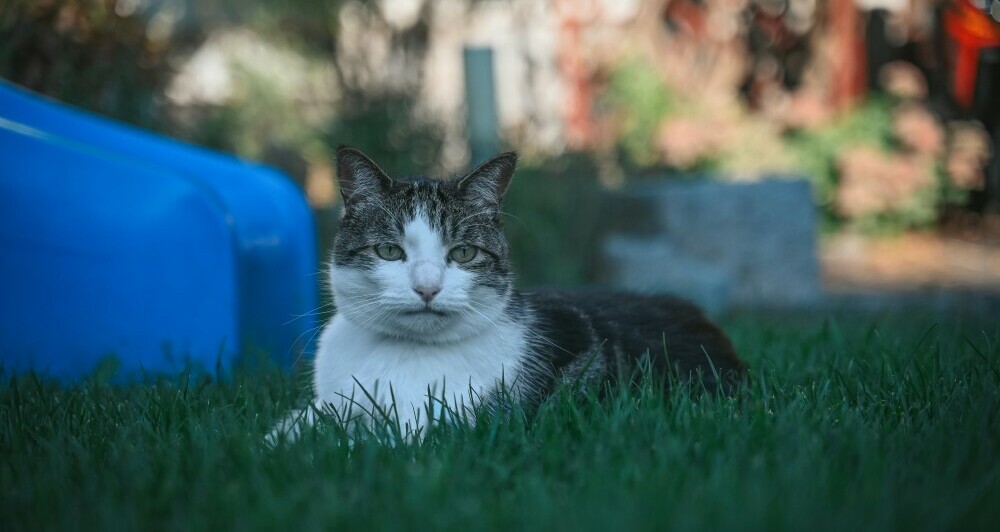So you’re probably thinking that your cat’s refusal to use their litter box is down to mere stubbornness, but there’s usually a lot more to it than that. Cats are known for their keen sense of cleanliness and a sudden departure from the litter box could be a signpost of an underlying issue worth paying attention to.
Observing behavioural changes is crucial. Cats are creatures of habit, so when they switch up their routine, it’s important to take notice. Is your cat avoiding the litter box entirely, or just using it inconsistently? This isn’t just about a cat being picky, it might be avoiding pain or expressing discomfort.
Cats maintain remarkably high personal hygiene standards. They instinctively cover their waste to hide their scent from predators, which means using a litter box is more than a habit – it’s an ingrained survival instinct. When a cat chooses a corner of the carpet over the litter box, it’s time to ask why and delve into the possible motivations behind this choice.
Medical Misgivings: When Health Affects Habits
You many not realise it, but sneaky health issues can impact your cat’s litter box behaviour. You might not realize it, but the evidence is often hiding in plain sight. Change in bathroom patterns can be the first clue that something’s not right with your kitty’s health. It’s vital to pay attention to these signs, as cats are masters of disguise when it comes to pain and discomfort.
We’re going to explore the common health problems that could be at the root of your cat’s litter box rebellion. Issues like urinary tract infections, kidney stones, or even arthritis can make the experience of using the litter box painful. Stress and anxiety, too, can throw a wrench in your cat’s habits. These conditions need a vet’s input, so don’t hesitate to make an appointment.
If you’ve got a declawed cat, then you’ve got an entirely different situation on your hands. Declawing can cause lingering pain that makes stepping into litter an ordeal. This isn’t just about physical discomfort, it’s also about the psychological impact of a declawing procedure.
Remember, ignoring these possibilities could prolong your cat’s distress. I’m here to help you pinpoint the problem, and the key lies in watchfulness and quick action. Observe your cat, note any changes in behaviour, and consult your vet. Early intervention can make a world of difference.
The Comfort Zone: Litter and Litter Box Preferences
I’m going to let you in on a little secret: Cats are particular about their toilets. But don’t worry too much about it. Once you crack the code of your cat’s litter and litter box preferences, you’re on your way to harmonizing their bathroom habits with your home life.
First up, let’s talk about litter textures. Some cats like it fine and sandy, while others might prefer a chunkier feel. And when it comes to scents, most cats are fans of unscented litters. Remember, a strong fragrance might be pleasant for you but overpowering for your feline friend.
Choose something that resonates with your cat. Experiment a bit. You can always adjust your approach down the road if you notice your cat isn’t quite satisfied with the current selection. Keep an eye on how your cat interacts with different litters and be ready to make a switch if necessary.

Now what about the litter box itself? This isn’t just about the litter. Size and style matter here. Does your cat like to have plenty of room to move around? Maybe a high-sided box for privacy? Or perhaps a larger, open box to prevent feelings of being trapped?
And if you’re thinking one litter box is enough, let’s rethink that. The general rule is one box per cat plus one extra. This ensures that there’s always a clean option available, reducing competition and stress in multi-cat households.
You’re going to find out quickly that pleasing your cat’s preferences isn’t just good for them—it makes your life easier, too. After all, a satisfied cat is a tidy cat. And if preferences are met, many litter box problems simply fade away.
Territorial Considerations: Selecting the Ideal Spot
If you’ve ever moved furniture around only to have your cat give you that look of sheer betrayal, you might understand how deeply cats are affected by changes in their environment. Cats are territorial creatures, and they translate this behaviour to their litter box location as well. The right spot is everything.
For a cat, the litter box needs to be in a location that is both private and easily accessible. If the box is too out in the open, your cat might feel exposed and vulnerable while doing their business. On the other hand, if it’s too hidden or hard to reach, they may not bother at all. It’s like Goldilocks and her porridge – it has to be just right.
In homes with multiple cats, it’s not just about finding a sweet spot but about making sure there are enough ‘sweet spots’ to go around. Having more than one litter box, and positioning them in various parts of the home, can prevent territorial disputes. Cats appreciate their own designated areas, and this can significantly reduce the tension which commonly leads to litter box problems.
I’m going to be real with you—figuring out this balance can be a bit of trial and error. You might need to shift things around until you see that your cat is comfortable. And remember, every cat is an individual. What works for one may not work for another. Keep an eye on their behaviour for clues about what they prefer.
Remember that once you’ve settled on the perfect location, maintaining a spotless litter box environment is crucial. This leads us to our next point: how cleanliness is next to godliness when it comes to keeping your cat happy with their litter box. The next section is going to help you understand how to make that loo sparkle in a way that even the most fastidious cat can’t resist.
Restoring Routine: Encouraging Proper Litter Box Use
The journey to getting your cat back on track with using the litter box doesn’t have to be fraught with frustration. It’s about understanding and tenderness, combined with some strategic adjustments. I’m talking about maintaining the litter box with absolute cleanliness, because, let’s be serious, who wants to use a dirty bathroom?
Don’t overlook the profound impact of positive reinforcement. You’re going to find out about the right kind of praise and treats that can work wonders. It’s not just about a quick fix; it’s building a lasting routine. But remember, just don’t focus too much on perfection. Cats will be cats, and sometimes they need time to adjust.

And finally, there’s no shame in asking for help. If you’re struggling, it might be time to call in a professional animal behaviourist. They’ve got the expertise to provide insight into your cat’s particular situation, helping to forge a path back to normal litter box use.
I really hope that you won’t need to get to that point, though. With the tips I’ve outlined, you’ll be well-equipped to tackle the issue head-on. Your cat’s comfort and wellbeing are worth every effort, and the reward—a happy coexistence with your feline friend—is absolutely priceless.
If you have found this to be helpful and are looking for additional advice then take a look at the homepage for many articles about cats, including Best cat litter with odor control and Best toys for senior cats, to name a few.

